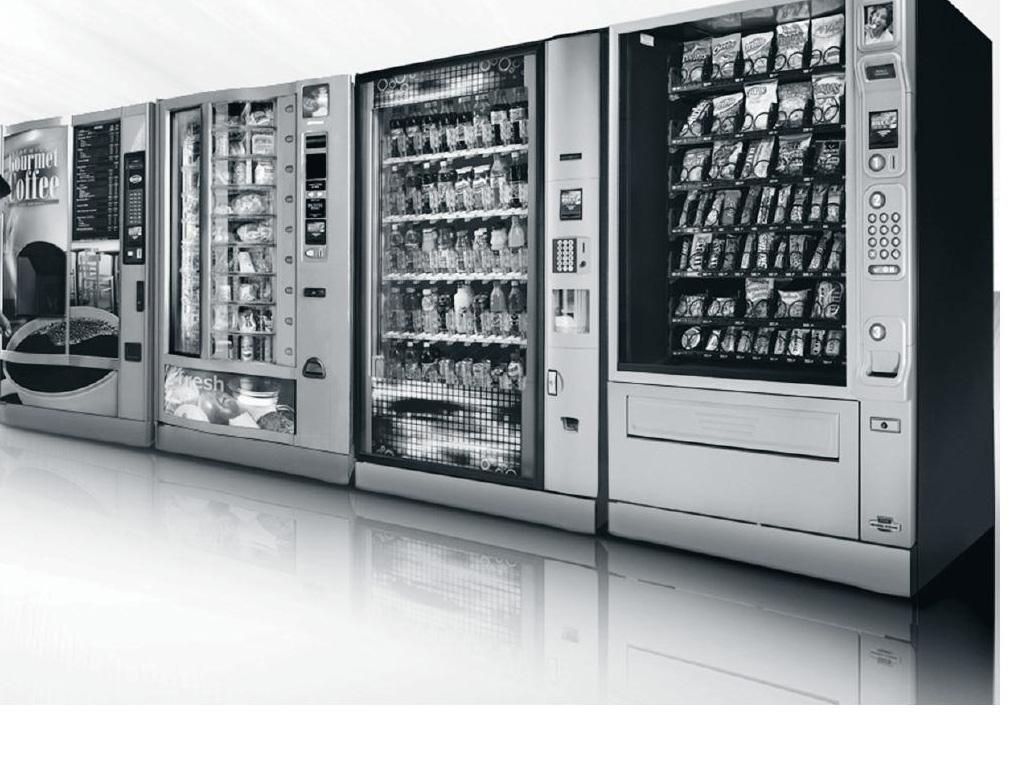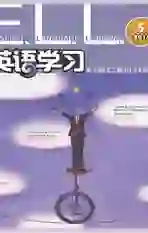瓶装水为何热销
2016-05-14吴悠
吴悠

Bottled & Sold: the Story Behind Our Obsession1 with Bottled Water
随着生活水平的提高,人们对生活品质有着越来越高的追求。水作为人类生存的必需品,也被价签分为三六九等。凭借便携、安全、健康等优点,瓶装水日渐成为市场的宠儿。然而瓶装水真的像广告做得那么好吗?它真的比自来水更安全吗?瓶装水究竟为何风靡全球?
1. obsession: 痴迷,着魔。
2. 突然间,公共饮水器消失在人们的视野当中,取而代之的是随处可见的瓶装水:在每一家便利店、每一台饮料冰柜和自动贩卖机中都能见到。water fountain: (设于公共场所的)饮水器;vanish: 消失,突然不见;beverage cooler: 饮料冰柜;vending machine: 自动贩卖机。
3. cart: 手推车,手拉车。
4. lunch counter: 便餐馆。
5. Silicon Valley: 美国硅谷。
6. throw-away: 用后可扔的。
7. lobby: 大厅;reception: 接待处。
8. unload: 卸货;cafeteria: 自助餐厅。
9. anachronism: 时代错误,不合潮流的人或物;liability: 累赘,惹麻烦的人或物;concession stand: (体育比赛场地、剧院等开设的出售食品、饮料等的)营业摊点,小商店。
10. health-conscious: 注重健康的;tap water: 自来水; contamination: 污染,污染物; contagion: 传染病。
11. pipe: 用管道运输;inhabitant: 居民。
12. 然而,穷人们则要依靠私人供水商和附近的水井,这些水井往往破败不堪、受到污染或病菌肆虐,例如曾在周围区域传播霍乱的著名的宽街水泵。vendor: 供货商;taint: 污染,玷污;pump: 泵;cholera: 霍乱。
13. 1851年伦敦世博会期间,关于对要展出的英国顶尖技术、科学和创新成果的设想,《喷趣》杂志就写道:“一杯适合饮用的水将是整个博览会最杰出也最能福及全球的发明。”conceive: 构想,设想; showcase: 使展示;triumph: 成功,成就;Punch Magazine: 《喷趣》杂志,是英国著名的讽刺漫画杂志。
14. outbreak:(疾病的)爆发。
15. eliminate: 消除。
16. faucet: 水龙头,旋塞。
17. in favor of: 支持,赞同。
18. controversy: 争议;contradiction: 矛盾;glitterati: 上层人士,名流; perception: 认知。
19. sommelier:(旅馆、餐馆等的)侍酒师;fancy: 昂贵的;premium: 高价的,优质的;boost: 提高。
20. exorbitant: 过高的,高得离谱的。
21. celebrity: 名人,名流;tout: 兜售。
22. 腰缠万贯却缺少理智的富人们花费至少50美元购买装在嵌有假宝石的华丽瓶子里的白开水,抑或是可能产自异国或经过神奇加工的“优质水”。plain water: 白开水;gem: 宝石,珍宝;exotic: 异国的。
23. niche:(产品的)商机,有利可图的市场定位;mineral-water: 矿泉水。
24. gallon: 加仑(液量单位);sparkling mineral water: 气泡矿泉水。
25. trucker: 卡车司机;retailer: 零售商,零售店。
26. pocketbook: 钱包,财力。
27. 自来水之争向来是一场不宣而战的战争,但是近些年来,私人瓶装水商发起了越来越多的活动,巧妙地宣扬自来水可能带来的健康风险,或是鼓吹瓶装水可能具备的健康优势。subtle: 巧妙的,狡猾的;play up: 渲染,宣扬;launch: 发起,发动。
28. convince: 使信服,使相信; essentially: 本质上,根本上;accessible: 容易得到的;alternative: 可供选择的事物。
29. perceived: 感知到的;flaw: 瑕疵,缺点。
30. invisible: 无形的。
31. skyrocket: 飞涨,猛涨。
32. PepsiCo: 百事可乐公司;division: 部门。
33. irrigation: 灌溉。
34. Quaker Oats Company: 桂格燕麦片公司;candidly: 坦白地,坦率地; relegate: 使降级。
35. 瓶装水商在辩论、国会证词、广告和媒体宣传中都表明瓶装水产业的日益崛起不是以自来水产业,而是其他商业饮料为代价的,这是瓶装水行业最近的宣传活动策略之一。tactic: 策略,手段;Congressional:(美国)国会的;testimony: 证词,证据。
36. IBWA:(International Bottled Water Association)国际瓶装水协会;calorie: 卡路里;caffeine: 咖啡因; artificial: 人造的,假的;flavor: 味道;ingredient: 成分,要素。
37. intriguing: 引人入勝的,神秘的;potentially: 可能地,潜在地。
38. Department of Commerce:(美国)商务部。
39. carbonated: 含二氧化碳的;hard alcohol: 烈酒。
All of a sudden public water fountains have vanished and bottled water is everywhere: in every convenience store, beverage cooler, and vending machine.2 In student backpacks, airplane beverage carts3, and all of my hotel rooms. At every conference and meeting I go to. On restaurant menus and school lunch counters4. In early 2007, as I waited for a meeting in Silicon Valley5, I watched a steady stream of young employees pass by. Nearly all were carrying two items: a laptop and a throw-away6 plastic bottle of water. When I entered the lobby and checked in at reception,7 I was told to help myself to something to drink from an open cooler containing fruit juices and rows of commercial bottled water. As I walked to my meeting, I passed cases of bottled water being unloaded near the cafeteria.8 Water fountains used to be everywhere, but they have slowly disappeared as public water is increasingly pushed out in favor of private control and profit. Water fountains have become an anachronism, or even a liability, a symbol of the days when homes didnt have taps and bottled water wasnt available from every convenience store and corner concession stand.9 In our health-conscious society, were afraid that public fountains, and our tap water in general, are sources of contamination and contagion.10 It used to be the exact opposite—in the 1800s, when our cities lacked widespread access to safe water, there were major movements to build free public water fountains throughout America and Europe.
In London in the mid-1800s, water was beginning to be piped directly into the homes of the citys wealthier inhabitants.11 The poor, however, relied on private water vendors and neighborhood wells that were often broken or tainted by contamination and disease, like the famous Broad Street pump that spread cholera throughout its neighborhood.12 At the time of Londons Great Exhibition in 1851, conceived to showcase the triumphs of British technology, science, and innovation, Punch Magazine wrote: “Whoever can produce in London a glass of water fit to drink will contribute the best and most universally useful article in the whole exhibition.”13 Just three years after the Exhibition, thousands of Londoners would die in the third massive cholera outbreak14 to hit the city since 1800.
By the middle of the 20th century, spectacular efforts to improve water-quality treatment and major investments in modern drinking-water systems had almost completely eliminated15 the risks of unsafe water. Those of us who have the good fortune to live in the industrialized world now take safe drinking water entirely for granted. We turn on a faucet16 and out comes safe, often free fresh water. But those efforts and investments are in danger of being wasted, and the public benefit of safe tap water lost, in favor of17 private gain in the form of little plastic water bottles.
The growth of the bottled water industry is a story about 21st century controversies and contradictions: poverty versus glitterati; perception versus reality;18 private gain versus public loss. Today people visit luxury water “bars” stocked with bottles of water shipped in from every corner of the world. Water “sommeliers” at fancy restaurants push premium bottled water to satisfy demand and boost profits.19 Airport travelers have no choice but to buy bottled water at exorbitant20 prices because their own personal water is considered a security risk. Celebrities tout their current favorite brands of bottled water to fans.21 People with too much money and too little sense pay $50 or more for plain water in a fancy glass bottle covered in fake gems, or for “premium” water supposedly bottled in some exotic place or treated with some magical process.22
In its modern form, bottled water is a new phenomenon, growing from a niche mineral-water product with a few wealthy customers to a global commodity found almost everywhere.23 The recent expansion of bottled water sales has been extraordinary. In the late 1970s, around 350 million gallons of bottled water were sold in the United States—almost entirely sparkling mineral water and large bottles to supply office water coolers24—or little more than a gallon and a half per person per year. As the figure below shows, between 1976 and 2015, sales of bottled water in the United States doubled, doubled again, doubled again, and then doubled again. In 2015, nearly nine billion gallons (over 34 billion liters) of bottled water were packaged and sold in the United States and five times this amount was sold around the world, feeding a global business of water providers, bottlers, truckers, and retailers at a cost to consumers of over a hundred billion dollars.25
Millions of Americans still drink tap water at home and in restaurants. But there is a war on for the hearts, minds, and pocketbooks26 of tap water drinkers, a huge market that water bottlers cannot afford to ignore. The war on the tap is an undeclared war, for the most part, but in recent years, more and more subtle campaigns that play up the supposed health risks of tap water, or the supposed health advantages of bottled water, have been launched by private water bottlers.27
How do you convince consumers to buy something that is essentially the same as a far cheaper and more easily accessible alternative?28 You promote perceived advantages of your product, and you emphasize the flaws in your competitors product.29 For water bottlers this means selling safety, style, and convenience, and playing on consumers fears. Fear is an effective tool. Especially fear of sickness and of invisible30 contamination. If we can be made to fear our tap water, the market for bottled water skyrockets31. Some of the worlds biggest bottlers have also targeted tap water. In 2000, shortly before he was made chairman of PepsiCos North American Beverage and Food division,32 Robert S. Morrison publicly declared, “The biggest enemy is tap water... Were not against water—it just has its place. We think its good for irrigation33 and cooking.” That same year, Susan Wellington, president of the Quaker Oats Companys United States beverage division, candidly told industry analysts, “When were done, tap water will be relegated to showers and washing dishes.”34
Looking at the massive growth in bottled water consumption, it is apparent that the bottled water companies have been winning the war against tap water. And in one of their latest campaign tactics, the bottled water industry is now arguing in debates, Congressional testimony, advertising, and media campaigns that the growth of bottled water sales doesnt come at the expense of tap water, but rather other commercial beverages.35 In August 2013, they bought full-page ads in the New York Times. “Whether it comes from a faucet or a bottle, drinking water is an easy step people can take to lead a healthier lifestyle. So, as far as were concerned, the drink in everyones purse, backpack, and lunch box should be water.” In December 2007, in testimony to the U.S. Congress, the IBWA President, Joe Doss, said, “Consumers also choose bottled water over other beverages because it does not contain calories, caffeine, sugar, artificial flavors or colors, alcohol and other ingredients.”36
This is an intriguing and potentially powerful argument,37 except that it is false. Are we really drinking bottled water instead of soft drinks and other consumer beverages or are we actually drinking less tap water? The U.S. Department of Commerce38 collects excellent data on beverage consumption. Contrary to what the bottled water industry argues, the numbers show that we are buying more bottled water and carbonated soft drinks, and drinking less of everything else, including milk, coffee, tea, fruit juices, beer, wine, hard alcohol,39 and especially tap water.
The beverage companies are winning the war on tap water. As long as people can be made to fear tap water, they will seek out alternatives they think offer more safety. But we have to ask: is bottled water actually any safer? What do we know about whats actually in our tap water—or in the bottles of water we buy? And how safe is it to drink?
